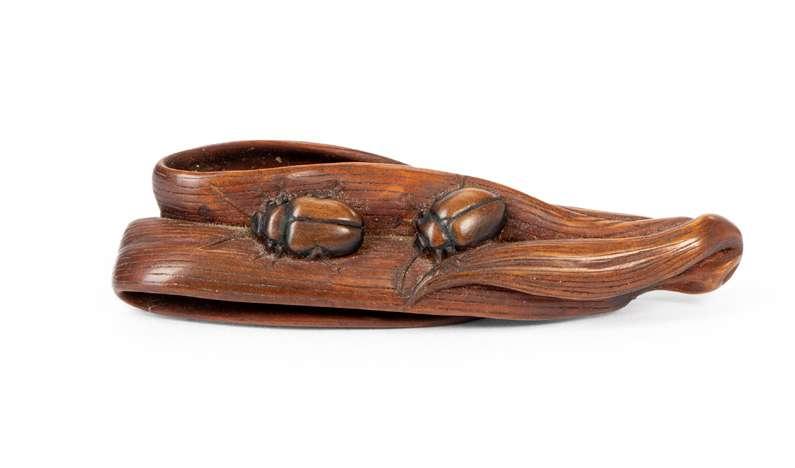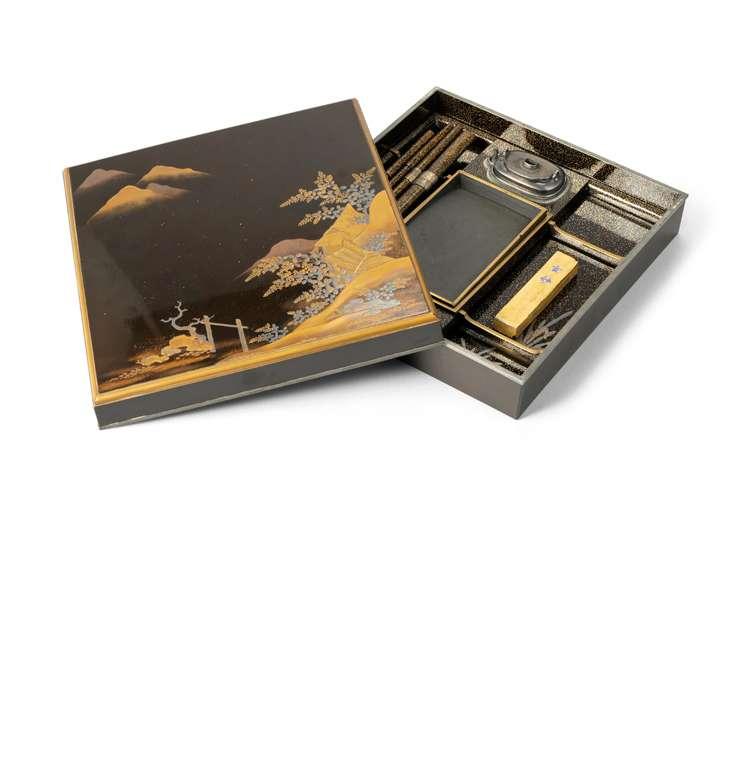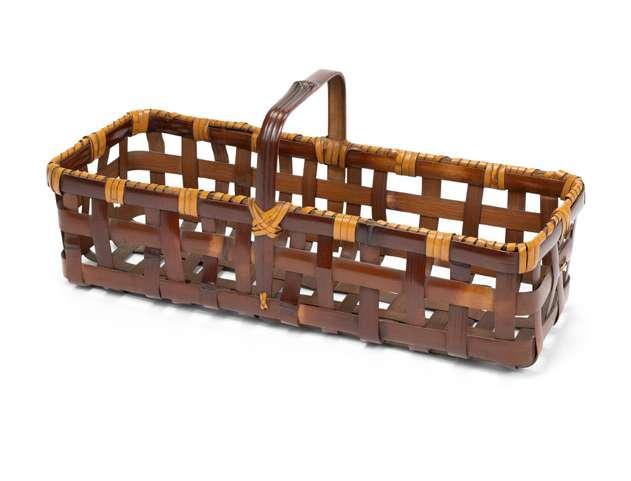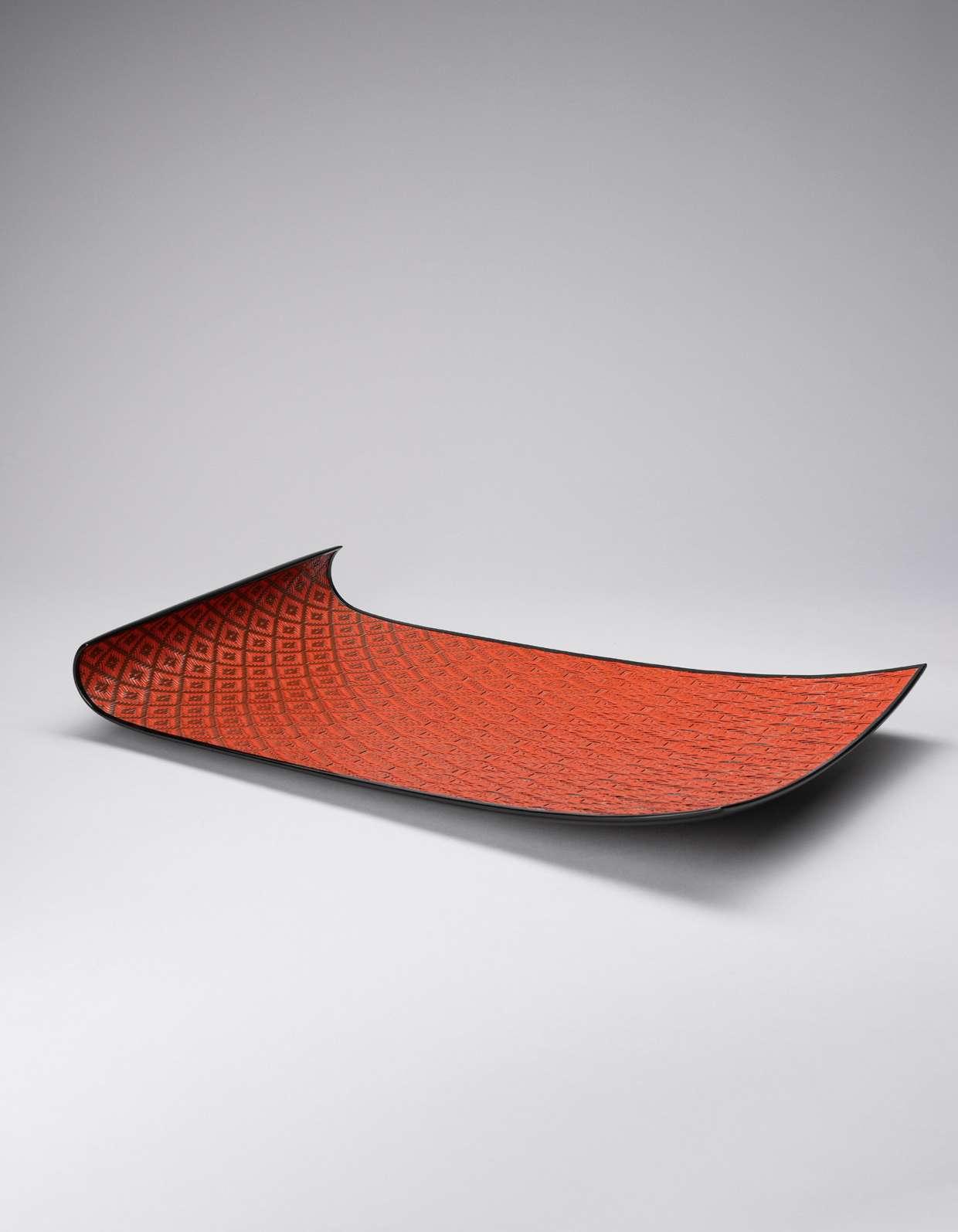
5 minute read
A SELECTION OF NETSUKE BY MICHAEL WEBB (1934-2009)
LOTS 70-73
Michael Webb’s first career in the art world saw him become Director and auctioneer at Sotheby’s London, taking important Japanese auctions such as the Hindson sales of netsuke in 1967-69. Progressively becoming frustrated with the auction world, he left the salerooms in 1976 for Yorkshire, where he fully embraced his hobbies of painting and carving netsuke. Luigi Bandini at Eskenazi Ltd was a strong supporter of his artistic endeavours, notably of his naturalistic depictions of animals rendered in boxwood. Several exhibitions at Eskenazi Ltd and the subsequent catalogues celebrated his creations, establishing him as a British master of netsuke carving. Bandini mentions in the Preface of one of these catalogues that Webb took up carving after a conversation with Giuseppe Eskenazi in the 1960s, to whom he gave his first netsuke of a bird carved in limewood.
Webb’s interest for Japanese Art developed whilst training as an auctioneer, and later flourished from his many friendships with Japanese specialists and connoisseurs, including W. W. Winkworth, Michael Birch, Neil Davey and Oliver Impey. The public interest for Webb’s netsuke grew further after the exhibition ‘Michael Webb: an English carver of netsuke’ which took place at the Ashmolean Museum (Oxford), in 1983. Lot 71 was displayed as part of the exhibition. Webb favoured carving his animals in boxwood, sometimes using tools formerly belonging to Mark T Hindson. He mastered the ukibori technique of raised carving, using it to suggest the warts on the skin of a frog, or the veins of a leaf. He polished his creations with oil or wax, and staining was achieved using complex mixes of dyes and stains.

Michael Webb’s netsuke can today be found in important collections including the Victoria and Albert Museum and Liverpool World Museum. One of his frogs was notably included in the loan exhibition ‘In a nutshell: Japanese netsuke from European collections’ at the Embassy of Japan in London in 2013.
70
A LARGE BOXWOOD NETSUKE OF TWO STAG BEETLES BY MICHAEL WEBB (1932-2009)
DATED 1987
The large insects depicted on a section of branch, locked in battle with their mandibles entangled, their eyes inlaid with small dark beads, the surface of the wood realistically stained and their wings with a lustrous sheen, the bark peeling at the back to reveal an inscription reading ‘MJW carved this at Crofton near York December 1987’, 6.1cm.
£600-800

A LARGE BOXWOOD NETSUKE OF BEETLES ON A LEAF BY MICHAEL WEBB (1932-2009)
C.1980S
The small insects depicted crawling on long curved leaves, with the minute details of their antennae realistically carved, the leaves embellished with long thin strokes; signed MW to the tip, 6.9cm, together with a receipt from Eskenazi Oriental Art Ltd. (2)
£600-800
Provenance: purchased from Eskenazi Oriental Art Ltd, 23rd November 1983. A copy of the original receipt is available. Exhibited: Ashmolean Museum, Oxford, October 1983, and Eskenazi Ltd, London, November 1983.

A LARGE BOXWOOD NETSUKE OF A CHAMELEON BY MICHAEL WEBB (1932-2009)

C.1980S
The reptile is depicted clambering upon a small twig, the rough texture of its skin realistically rendered in ukibori and stained in various colours, the eyes inlaid with small black beads, the branch signed MJW, 6cm.

£600-800
See p.53 of this catalogue for another view.
A LARGE BOXWOOD NETSUKE OF A CICADA BY MICHAEL WEBB (1932-2009)

DATED 1996
The plump insect is depicted on a small piece of bark, realistically carved and stained to highlight details of the wings and carapace; the eyes inlaid with small agate beads, signed underneath MJW and inscribed 1996, 5cm.
£600-800
A PAIR OF JAPANESE LACQUER MODELS OF SHACHIHOKO MEIJI ERA, 19TH CENTURY
The mythical dragon-fish depicted in a dynamic pose with their heads turned upward and baring their sharp teeth, the gilt and white eyes contrasting with the red lacquer, their bodies covered in scales and barbed fins, both 24cm. (2) £2,000-3,000

A RARE JAPANESE LOTUS-SHAPED NYOI ZUSHI SHRINE SCEPTRE
EDO OR EARLIER, 18TH CENTURY OR EARLIER
The tall wood body modelled as a lotus stem with three branches, the shorter one ending with a seed head, another with a curling leaf, and the tallest topped with a large flower bud; the underside of the burgeon subtly decorated with scrolling clouds in white gesso; a petal opening to reveal further cloud motives inside embellished in polychrome, and an oval aperture revealing a base for a small figure, carved as a rocky outcrop; with an orange silk cord tied up around the stem; 94cm overall.

£1,000-2,000
The lotus is an important symbol in Buddhism, representing spiritual purity. The shape of this zushi shrine is rare in Japan, but lotus mandalas made of copper alloy with hinged petals are more common in Indian iconography. See the Rubin Museum, New York, access. no. C2003.10.2 for a 12th century lotus mandala of Hevajra from north-east India with hinged petals.
76
A FINE JAPANESE GOLD AND SILVER LACQUER SUZURIBAKO (WRITING BOX AND COVER)


MEIJI ERA, 19TH CENTURY
Attribute to the Igarashi School, the almost square kabusebuta (overlapping lid) embellished with a gate leading to thatched pavilions in a mountainous landscape, the huts nestled amongst leafy vegetation; the interior of the cover richly decorated with a large silver crescent moon above a meandering stream, a man gathering horsetail with a sickle below; the interior of the box embellished with further horsetail plants on a nashiji ground; the inner tray with an inscribed rectangular inkstone, a silver suiteki and four calligraphy implements; the decoration rendered in hiramaki-e, takamaki-e and nashiji on the black roiro ground, and the rims with metal mounts; in a fitted tomobako wood box, 4.8cm x 23cm x 24.7cm. (14)
£4,000-6,000
Provenance: an English private collection, Somerset, purchased in Japan.
See p.5 (Chronology of Japan) of this catalogue for a detail of the decoration on the back of the cover.
77
A JAPANESE GOLD LACQUER AND MOTHER OF PEARL SUZURIBAKO (WRITING BOX AND COVER)
SHOWA ERA, C.1950
Of typical rectangular form, the lid richly decorated with leafy branches of adzuki bean plant, the leaves and pods rendered in gold hiramaki-e and aogai mother of pear inlays on the black roiro ground, the interior and inner tray embellished with gold nashiji; with a blue and white porcelain suiteki and a rectangular ink stone; the rims with metal mounts; with a three-character signature to the cover for Ono Keizan (act. c.1950), together with an inscribed tomobako wood box. (6)
£400-600
78
NAKATA KINSEKI (1902-1959)
SHOWA ERA, 20TH CENTURY
A Japanese rectangular woven bamboo basket for Ikebana (flower arrangement), with a short rectangular handle above, the pieces of bamboo cleverly intertwined to emphasize the different colours of the material, signed Kinseki saku underneath, 16cm x 38cm x 13.5cm.

£300-500
Kinseki was a student of master of bamboo Iizuka Hôsai II (1872-1934). His pieces can be found in collections around the world, including at the Metropolitan Museum of New York, access. no.2019.425.29a,b.
HAYATO OTANI: MASTER OF KINMA LACQUER

Otani Hayato (1954-) is one of the very few Japanese artists bearing the title of Living National Treasure, and Important Cultural Property Holder for the kinma technique of lacquerware. Otani was educated at the Kagawa Prefectural Takamatsu Kogei School and Kagawa Urushi Lacquerware Institute, where he studied under Living National Treasure Hitoshi Ota (1931-). Over his career, he perfected the kinma method consisting in repeatedly applying lacquer to a surface, carving it, filling the gaps and polishing them, a process that involves more than sixty steps. The lacquer is applied on rantai, a base made of woven bamboo strips shaped in a wood mould. The quality of Otani Hayato’s craft is widely recognised, and many of his creations were purchased by the Japanese Agency for Cultural Affairs. He received many awards, including at the Japan Traditional Art Crafts Exhibition, and in 2013, he was recognised as Kagawa Prefecture Person of Cultural Merits.
79 HAYATO OTANI
(1954-)
HEISEI ERA, 20TH CENTURY
A large Japanese red and black lacquer sculpture, the body of long rectangular form with a curled-up end, the surface embellished in kinma (lacquered woven bamboo), the diamond-shaped patterns getting smaller towards the rolled-up extremity, the reverse a deep black roiro lacquer ground, together with its original inscribed tomobako wood box and two further fitted cardboard boxes, 56cm x 31cm. (4)
£1,000-2,000









